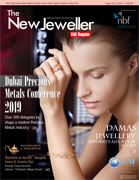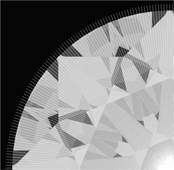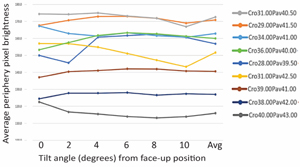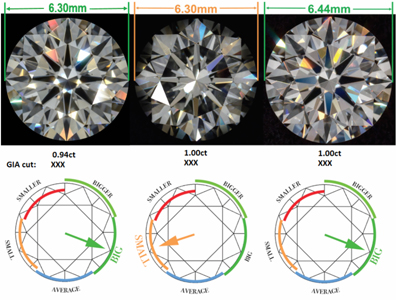
 |
|
| Home Technology / Education Events & News Archives Designs e - NewsLetter |
|
Deep cut diamonds leak light and look much smaller

Garry Holloway of Ideal-Scope and partner of Pricescope, is on a mission. His research of the past years has proven that “light leakage” is one of the chief reasons a diamond appears smaller than its carat weight suggests. Holloway says it is important to communicate both to retailers and consumers about “light leakage” and how this phenomenon – the result of a bad cut - affects the perceived size of a diamond.
 Measurements of digital pixel brightness of 360 radial peripheries. Measurements of digital pixel brightness of 360 radial peripheries.
The distribution of polished weights for diamonds listed on Pricescope showing the extent to which diamond cutters push the cutting to achieve ‘magic’ weights. But, Holloway says that this comes at a price – a different price. “Compromising on the cut often leads to a smaller ‘spread’ and a reduced optical performance, with peripheral light leakage being the casualty,” Holloway explains. “Negative spread stones invariably appear smaller than lighter well-cut diamonds with the same spread!"  Comparison of peripheral leakage for 9 different proportioned diamonds modeled in DiamCalc™ Comparison of peripheral leakage for 9 different proportioned diamonds modeled in DiamCalc™
‘Spread’ is a factor that allows comparison of the diameter of a diamond to that having a standard of 6.44mm for a 1.00ct round diamond calculated as: Spread = (D/(6.44))3 – C where C = Weight of diamond (ct.) and D = Diameter of diamond (mm). Sample diamonds were chosen to calibrate the effect of edge or peripheral leakage. Virtual images of the scanned stones were produced using 3D models entered into DiamCalc™ ray tracing software. Images were generated in Cosine lighting; a dark observer head with maximum illumination fading to dark at the horizon with no illumination below the girdle. The black and white images (without dispersion) were generated in face-up and tilted intervals. Pixel intensities were recorded along 360 radial axes and used to determine the brightness or darkness of a diamond’s periphery. Several thousand such images were created and their peripheral brightness computed. The rounded data from a GIA or AGS report is used to estimate peripheral leakage of a diamond under consideration. This method is less accurate than a real 3D-scanned model. In the future scanned models will enable ‘Looks Like’ size of fancy shape diamonds to be calculated. Most fancy cuts have even worse spread to weight ratios than round diamonds and most have terrible peripheral leakage. The additional carat weight and dimension report data enables a more accurate spread to be calculated than in the current version of HCA. 
|